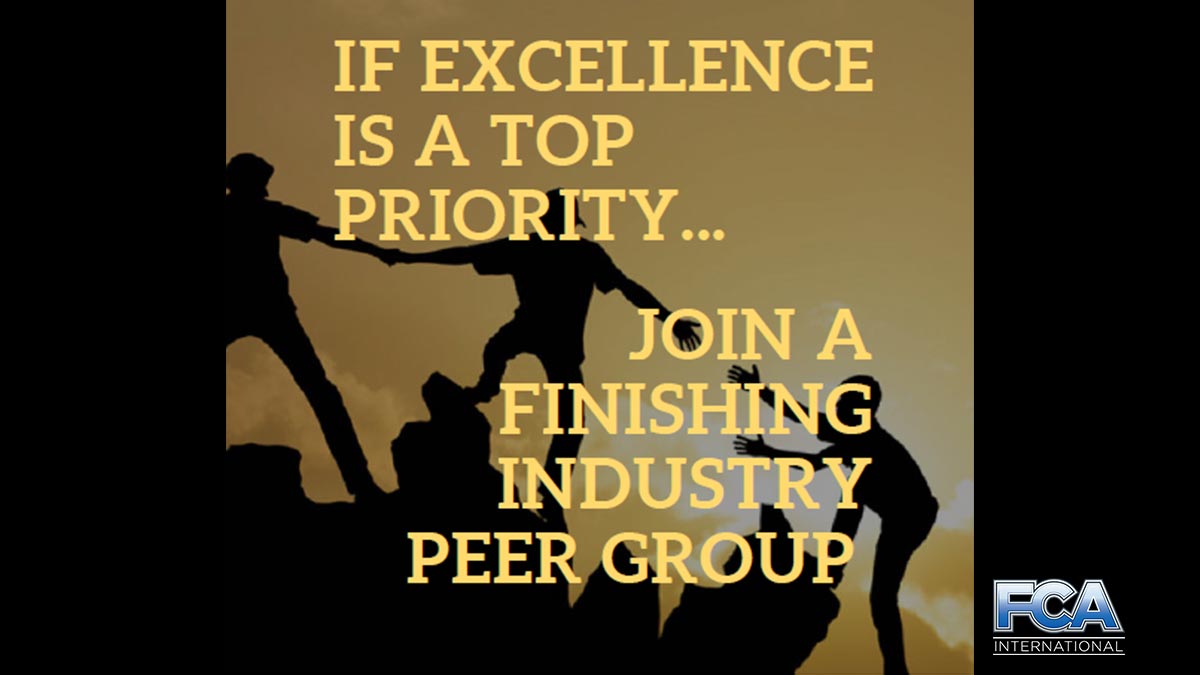Jim McBrayer, CEO of McBrayer and Associates, joined us for a three part educational series for FCA members on sales and growth strategies. You can watch videos below, or scroll down for quick recaps from each event!
Part 1 – The Top 4 Growth Strategies You Probably Don’t Know About
Part 2 – 12 Emotional Triggers of Buying Decisions
Part 3 – Hitting the Ceiling
TEXT RECAPS
Part 1 – The Top 4 Growth Strategies You Probably Don’t Know About (click to expand)
- On average, project managers and salespersons only spend about 30% of their time on high-value activities. The bulk of their time is spent on low-value activities.
- 5 Customer Categories:
- Preach to the converted – retaining customers (your best customers are someone else’s target).
- Cut the time wasters – quit playing the role of third bidder.
- Grow where you’re planted – increase the percentage of work you’re doing with current customers (e.g., you’re only doing 10 percent of the work they have available. Reach out and find out how you can increase that percentage).
- Follow the money – identify which segments will be hot.
- Gain new customers – take market share.
- Reasons decision-makers gave for agreeing to take a meeting:
- They want to expand their product offering.
- When their current supplier (your competition) is having problems.
- When they’re performing a product/supplier/contractor review.
- When they are having problems.
- When they want different ideas for solving their problems.
- When you reach out with relevant information to their challenges/priorities.
- Position yourself as a consultant/informational resource for potential customers.
- Growth strategies you probably don’t know about:
- Strategic introduction – transfer of credibility. Utilize an existing relationship between a good customer to get a direction introduction to a prospective customer.
- Capabilities briefing – not a sales meeting. Inform the prospective custom of your capabilities (and position yourself as a resource).
- Bounce meeting – set a future meeting now to discuss any job challenges/goals for if you win the job.
- Executive roundtable – bring in high-caliber executives from similar companies for a virtual meeting (limit to 8-12 attendees).
Part 2 – 12 Emotional Triggers of Buying Decisions (click to expand)
- Decisions are always based on emotions, and then justified with logic.
- Psychology of Selling: 6 Emotions of Compliance/Persuasion:
- Likeability = bonding. We like people who like us. We like people who have shared values.
- Credibility = competency. We need to make sure we’re establishing our credibility when talking to people.
- Reciprocity = return. We feel a psychological obligation to do or give something back when we get something. We want to treat people the way we’re being treated.
- Scarcity = restrict. Hard wired to want things that we can’t have, especially when it’s something we’re used to having.
- Congruence = commitment. Show the commitment to your work. Show examples of the work you’ve completed relevant to your customer.
- Differentiation = comparison. We decide by comparing.
- 12 triggers of buying decisions:
- Recognize shared similarities
- Declare your intent
- Appeal to visual (a picture is worth a thousand words)
- Teach something valuable
- Seek understanding first
- Find other’s aspirations (what are the goals of this project. What does success look like for this project)
- Reframe the conversation (help the customer understand the negative consequences of the job going wrong)
- Unveil their plan
- Craft compelling message
- Third-party validation
- Confess your weakness
- Contrast your claims
Part 3 – Hitting the Ceiling (click to expand)
- Purposes of this presentation, look at your business from the 30,000 ft view. “We need to work more on our business, not in our business.
- Hitting the ceiling is a normal part of growth for organizations. Organizations grow through evolution and revolution.
- When you hit the ceiling you either break through, flat line or fail. 50% of start up businesses fail within five years.
- Five leadership abilities that increases our probability of breaking through the ceiling:
- Simplify – rooting out the complexity as it grows in an organization.
- Delegate – delegate and elevate. Only way for businesses to grow is for leaders to build extensions of themselves and let go of the responsibilities.
- Predict – predict on two levels: long-term (90+ days out) and short-term (daily and weekly).
- Systemize – every company has a handful of core processes that make up your operating system (HR, lead generation, accounting, sales, etc.). Until we have the steps for those systems, it’s very hard to scale.
- Structure – Take a big step back and get the structure right for your organization.
- 6 Components of business: Vision – Data – People – Issues – Process – Traction
- Tools for business component:
- Vision
- Vision Traction Organizer
- “Shared by All”
- People – the right people in the right seats.
- People analyzer (evaluate based on organizational values)
- Accountability chart
- Data – boiling your business down to solid, hard data.
- Scorecard – provides a weekly take on measurables you determine are most important
- Measurables – leading indicators (actions or tactics) that you are looking for people to take. Want each person in your organization having 1-3 measurables each week
- Issues
- Issues List
- Issues Solving Track: IDS (Identify, Discuss, Solve)
- Process – document your processes.
- Documented processes
- Followed by all
- Traction – getting it done. Accountability and discipline.
- Rocks – 90 day priorities. 3-7 for organization, 3-7 for individual
- Meeting Pulse – “Level 10 Meeting.” Weekly meetings with leadership that are 60-90 minutes tops
- Vision





Leave a Reply